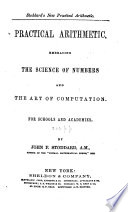 | John Fair Stoddard - Arithmetic - 1868 - 356 pages
...years or intervals the annuity is to continue, 5, tha last term is the first term multiplied by the ratio raised to a power one less than the number of terms, 300 x (1.06)4. Hence, the Rule. — Find the amount of the first payment, for the last term of the... | |
 | John Fair Stoddard - Arithmetic - 1888 - 480 pages
...years or intervals the annuity is to continue, 5; tha last term is the first term multiplied by the ratio raised to a power one less than the number of terms, 300 x (1.06)4. Hence, the Rule. — Find the amount of the first payment, for the last term of the... | |
 | Edward Brooks - Arithmetic - 1877 - 438 pages
...3', which equals 4374. Hence the Rule. — The last term equals the first term multiplied by the rate raised to a power one less than the number of terms. NOTE. — The table of compound interest, Art. 511, can be derived from this case, 1 plus the rate per cent,... | |
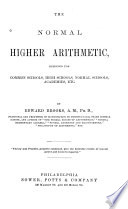 | Edward Brooks - Arithmetic - 1877 - 528 pages
...or 3x 46, which equals 12288. Rule. — To find the last term, multiply the first term by the rate raised to a power one less than the number of terms. NOTE. — This rule may be expressed by the formula 1 = arn~1. 2. The first term is 4, rate 5, and the number... | |
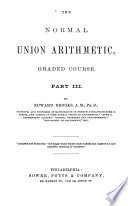 | Edward Brooks - Arithmetic - 1877 - 232 pages
...3', which equals 4374. Hence the Rule. — The last term equals the first term multiplied by the rate raised to a power one less than the number of terms. NOTE. — The table of compound interest, Art. 511, can be derived from this case, 1 plus the rate per cent.... | |
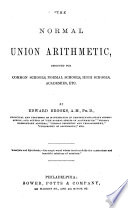 | Edward Brooks - Arithmetic - 1877 - 444 pages
...3*, which equals 4374. Hence the Rule. — The last term equals the first term multiplied by the rate raised to a power one less than the number of terms. NOTE. — The table of compound interest, Art. 511, can be derived from this case, 1 plus the rate per cent,... | |
 | Zalmon Richards - Arithmetic - 1885 - 136 pages
...quotients continuously, as many times, less one, as the number of terms ; or, divide the first term by the ratio raised to a power one less than the number of terms. 2. If the first term be 3, the ratio 4, and the number of terms 5, what is the last terra? 3. If the... | |
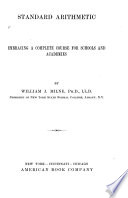 | William James Milne - Arithmetic - 1892 - 440 pages
...difference between the ratio and 1. Or, since the last term is equal to the first term multiplied by the ratio raised to a power one less than the number of terms, The sum of a geometrical series is found by dividing the difference between the first term and the... | |
 | Edward Brooks - Arithmetic - 1895 - 430 pages
...X 45, which equals 1024. Hence Rule. — The last term equals the first term multiplied by the rate raised to a power one less than the number of terms. NOTE.— The table of compound interest, page 415, can be derived from this case, 1 plus the rate per cent,... | |
 | George Soulé - Business mathematics - 1910 - 1042 pages
...demonstrated that the last term of a geometrical progression is equal to the first term, multiplied by the ratio raised to a power one less than the number of terms ; therefore if we divide the last term by the first term, the quotient will be equal to the ratio raised... | |
| |